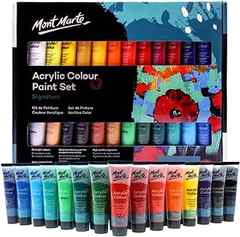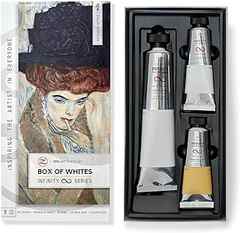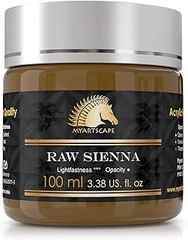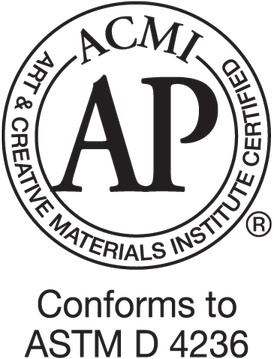Burnt sienna conjures up images of warmth, earth, and sand. The color ranges from a reddish-brown to a yellowish red and the raw sienna is commonly used in glazes and stains. The sienna color is also perfect to use with other natural elements like wood or leather as all the natural earth tones work well together. So, let us now go into more detail about the amazing burnt sienna color.
Burnt sienna color acrylic paint

You’re seeing this ad based on the product’s relevance to your search query.
fantastory Acrylic Paint Set 24 Colors (2 oz / 60ml Each), Non Toxic, Non Fading, Waterproof, Acrylic Paint Kit for Artwork & DIY Projects on Canvas, Wood, Glass, Clay, Fabric, Ceramic, Paper, Canvas
Was: £26.99 £26.99
Buy any 10, Save 6%
Delivers to Poland

You’re seeing this ad based on the product’s relevance to your search query.
MONT MARTE Acrylic Paint Set 24 Colours 36ml, Perfect for Canvas, Wood, Fabric, Leather, Cardboard, Paper, MDF and Crafts
RRP: £27.99 £27.99
Save more with Subscribe & Save
Save 5% on any 4 qualifying items
Delivers to Poland

You’re seeing this ad based on the product’s relevance to your search query.
All About the Burnt Sienna Color
So, what is the difference between sienna and burnt sienna? When was this pigment discovered and used and did famous artists use it in their artwork? Read further to find out the answers to all these questions and more.

What Color Is Sienna?
Sienna is an earth pigment that in its natural form is more of a yellowish-brown and is also known as raw sienna. The color comes from the iron oxide as well as manganese minerals present within the pigment. This raw sienna is then heated, and the iron oxide dehydrates, which then partly changes into hematite that gives the pigment its darker burnt sienna color. The burnt sienna color is darker and a deeper reddish-brown.
The burnt sienna color can be placed in the same color category as terracotta and red clay as all of these have reddish-brown.
Sienna Color: A Brief history
The word sienna is of Italian origin and means “sienna earth”. Siena itself is an actual city in Italy where the pigment was mined and manufactured during the Renaissance period and has since become an extremely popular pigment used by many artists. The name “sienna” was recorded in English way back in 1760.

Self-Portrait with Two Circles (1665-1669) By Rembrandt; Rembrandt, Public domain, via Wikimedia Commons
The sienna pigment is one of the original pigments, along with umber and ochre that was used many years ago in paintings on cave walls and was also used by the Ancient Romans. There were also other names for the pigment including terra Rossa, which was recorded by Giorgio Vasari who was a popular painter and author of painting techniques during the Renaissance period. Other names include terra Di Siena and terra gialla. Many artists used sienna as well as yellow ochre and umber in their paintings.
- Self-Portrait with Two Circles (1665 to 1669) by Rembrandt
- The Incredulity of Saint Thomas (1602) by Caravaggio
- The Battle of Marciano (1511 to 1574) by Giorgio Vasari
Unfortunately, the supply of sienna became less and by the 1940s, it was almost at an end. Today, Sienna is obtained from other Italian cities like Sicily or Sardinia. Other sources then included the Appalachian Mountains and areas in Germany and France. Of course, due to advancements, much of the pigment is now synthetic. You should be able to check the paint label to see if it is from a natural source or if it is synthetic.
Pigments are usually given a code, so if you are looking for a natural burnt sienna, it should read PR-102.
Sienna Color Tones
The sienna color is used for a variety of shades today, which are offered by many different paint companies. For example, you might come across dark sienna, however, this is simply a name and does not refer to the natural earth sienna. Below are a few more different sienna color tones.

Burnt Sienna
As we have already discussed, burnt sienna is obtained from the earth pigment sienna, which is then heated to produce the burnt sienna color, a dark reddish-brown. The burnt sienna pigment has also been called red ochre, terra rossa, and red earth.
The color is associated with earth, gardening, and anything natural.
| Sienna Shade | Sienna Color Hex Code | CMYK Sienna Color Code | RGB Sienna Color Code | Sienna Color |
| Burnt Sienna | #e97451 | 0, 50, 65, 9 | 233, 116, 81 |
Dark Sienna
This color can be classified as an extremely dark shade of red. The color is also quite popular and used extensively on an American Television show known as The Joy of Painting, which is hosted by Bob Ross.
| Sienna Shade | Sienna Color Hex Code | CMYK Sienna Color Code | RGB Sienna Color Code | Sienna Color |
| Dark Sienna | #3c1414 | 0, 67, 67, 76 | 60, 20, 20 |
Raw Sienna
The raw sienna pigment is what you get before you put it through any process. The color is more of a yellow-brown and turns darker, to burnt sienna when it is heated. Raw sienna color paint is more transparent than yellow ochre, which is more opaque.
However, all of these colors can be classified as earth tones.
| Sienna Shade | Sienna Color Hex Code | CMYK Sienna Color Code | RGB Sienna Color Code | Sienna Color |
| Raw Sienna | #9a6200 | 0, 36, 100, 40 | 154, 98, 0 |
Bright Sienna
This is a lighter and brighter version of sienna, with about 60 percent lightness and saturation. Bright sienna may also be placed within the orange family of colors as it has an orange-brown appearance. A nice addition to a sienna color palette.
| Sienna Shade | Sienna Color Hex Code | CMYK Sienna Color Code | RGB Sienna Color Code | Sienna Color |
| Bright Sienna | #d68a59 | 0, 36, 58, 16 | 214, 138, 89 |
Sienna
This is a darker and more brow version when compared to the raw sienna. This color also contains less of a red undertone when compared to the burnt sienna. Using it alongside blue should make it stand out more.
A shade of red, yellow, and sienna should make a nice analogous color scheme.
| Sienna Shade | Sienna Color Hex Code | CMYK Sienna Color Code | RGB Sienna Color Code | Sienna Color |
| Sienna | #a9561e | 0, 67, 83, 47 | 136, 45, 23 |
How to Make Burnt Sienna
The first and easiest option to create a burnt sienna paint color would be to simply go out and purchase a tube of burnt sienna from the art shop since it is a popular choice by many artists. However, if for some reason, you do not have a tube of paint of this color, why not make it up yourself? All you need are your primary colors. The color will add a nice warm and natural color to paintings and can be used to help paint trees, mountains, scenery, and skin tones.
Mixing Purple and Orange
One of the “rules” when mixing paint, is to not combine your primary colors. However, there comes a time when this is exactly what you want to do. Basic knowledge of color theory can help in this matter. Most of us already know the primary as well as the secondary colors, then you have your tertiary colors. Now there is some debate on this as some have different views on tertiary and intermediate colors. In this case, tertiary colors are a combination of two secondary colors.
When it comes to burnt sienna, this color can be formed by combining purple and orange.
Now you can use purple and orange from a tube and adjust the color by adding white or more purple or orange to get different shades. To get the best and most accurate results, it is a good idea to start from scratch and use your primary colors. Many brands of paint differ in their paint formulas, so you might get different results if you use the tubes of paint. But if you do use purple and orange paints, try using the different shades and mix in various ratios to create a burnt sienna color palette.
Mixing Primary Colors
An advantage of using only the primary colors is fewer paints. So, when you travel, you only have a few paints to take with you, making it easier and lighter to move around. Place your primary paint colors, which are red, yellow, and blue, onto a mixing palette. Take a little yellow and then mix in some red to give you a yellow-orange color. You can then add a small amount of blue, which should darken the mixture slightly, forming a basic burnt sienna color.
Always use more yellow and red to make the burnt sienna color. You can then adjust the color by mixing in a little more red and then a small amount of orange. You can carry on adding small amounts of yellow, red, and blue until you reach the burnt sienna paint color you are looking for. For example, consider mixing a bright yellow like gamboge with permanent rose, and then adding a small amount of cobalt blue to create a burnt sienna color.
Basics Acrylic

Basics is for all creatives. For all budgets. It’s perfect for all painting techniques including underpainting and sketching. This medium viscosity paint is made with lightfast, artist-quality pigments in an expanded choice of 72 colors.
See all colors below
COLORS
Filter by
Apply filters
Filter by
No results
Cadmium Yellow Light Hue
Cadmium Yellow Medium Hue
Cadmium Yellow Deep Hue
Vivid Red Orange
Cadmium Orange Hue
Cadmium Red Light Hue
Cadmium Red Medium Hue
Cadmium Red Deep Hue
Alizarin Crimson Hue Permanent
Light Blue Violet
Prussian Blue Hue
Cobalt Blue Hue
Cerulean Blue Hue
Light Blue Permanent
Bright Aqua Green
Hooker’s Green Hue Permanent
Green Deep Permanent
Light Green Permanent
Light Olive Green
Brilliant Yellow Green
Naples Yellow Hue
Transparent Mixing White
See more See fewer

1 / 6 Viewing 1 of 6 for this product
Previous Image Next Image
Also available in:

All our paints are intermixable and water-based, with archival results. Tested and certified at Duke University by the ACMI.
127Burnt Sienna
A rich warm brown color made by burning raw sienna. Sienna is a natural yellow clay found in the earth and deepens in color when heated. It’s one of the oldest pigments in its natural state and can be found in prehistoric cave art. Named after Siena in Italy, where the pigment was sourced during the Renaissance, it is a opaque color with red-brown tones
Play
Anything but Basic
Basics Acrylics are formatted with the same lightfast, fine art pigments we use in our professional range, but just a lighter load.
Play
24 new Basics Colors
Quality lightfast pigments. Great if you’re on a budget – the everyday acrylic.
Play
Mix Up Your Color
What can you do with Basics acrylics? The answer: pretty much everything.
MORE INFO
QUALITY
FINE ART PIGMENTS
ECONOMICAL
SAFETY
SURFACES
ARCHIVAL
QUALITY
Basics gives you the perfect balance of quality and economy. Made for all artists, Basics acrylics are formulated with the exacting Liquitex standard. Which means they’re made with the same lightfast, fine art pigments we use in our professional range, but just a lighter load. Choose from a range of sizes:
4oz (118ml) in 72 colors
8.45oz (250ml) in 36 colors
14oz (400ml) in 30 colors
32oz (946ml) in 22 colors
0.34oz & 2.54oz in sets only

FINE ART PIGMENTS
All Liquitex paints use the highest quality pigments and go through the same rigorous manufacturing process. The only difference is that with Basics we use a lower concentration of pigment than our professional paints. For Basics, fine art pigments are selected and milled using the latest basket bead-mill technology, in the same way as Soft and Heavy Body Acrylics. Pigments are ground with tiny reinforced ceramic beads to give fine dispersion, great color development, strength and brightness, before being added to the acrylic emulsion.

ECONOMICAL
Push your budget harder with Basics. Use on their own or combine together with professional materials – if they’re made by Liquitex, they’re all intermixable. Perfect for everyday use, for sketching out preliminary ideas, for underpainting before laying down your final paint application and for covering large areas.

SAFETY
Basics acrylics are safe for you to use. All colors are independently tested by the Art and Creative Materials Institute at Duke University, and hold the Approved Product (AP) safety seal. This means they are certified to contain no materials in sufficient quantities to be toxic or harmful to humans or to cause health problems, making them ideal for studio and educational use.

SURFACES
If your paint sticks to it, you can use it. Use Basics on:
- canvas
- paper & board
- wood & masonry
- metal
- styrofoam
- stone & ceramics
- textiles

ARCHIVAL
Your work has a life beyond you. As with all Liquitex paints, the pigments in Basics acrylic have passed extensive tests for lightfastness. The advanced acrylic formula is highly flexible, durable, non-yellowing and UV-resistant. Your work will have the greatest archival permanence possible, withstanding color shifting or fading to stay vibrant and true.

Basics to professional
Progressing
As your budget expands, or your practice evolves, you may want to start exploring new techniques. Experiment with your materials or pick up one of our ready-made Basics techniques kits, which gives you all the tools you need, plus a step-by-step guide. And as your budget expands, or you get more serious, you may want to start exploring the more specialist lines of Liquitex Professional. Higher pigment loads give stronger colors, a wider range of mediums let you create new effects. And you can try different acrylic paint textures and formats – from inks to fine art spray paint.
Good pigment load
High pigment load
Good range of colors
Wide range of colors
One consistancy of paint (medium viscosity)
Choice of paint viscosities and formats
Same pricing for all colors of the same size
Different series pricing depending on pigments





